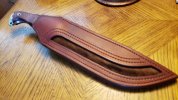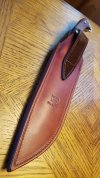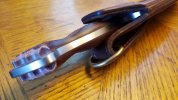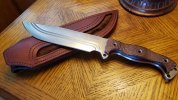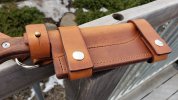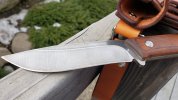- Joined
- Oct 17, 2015
- Messages
- 11,448
Question, I've read how resistant Infi steel is to taking a patina. While building a sheath the blade ended up with a stain.
Harness leather with a hair on hide insert. I wet the leather and inserted the knife so it could dry and form around the scales. I wrap all of the knives with a heavy duty seranwrap and warm it to get a good protective barrier before hand so there is protection on the blade. The next morning I pulled the knife out and noticed moisture around the leading edge. I took the seranwrap off and there was the stain. I used some 0000 steel wool but made no difference. I applied some polish and that did end up removing the stain. Im not sure how it happened but maybe the dye used on the liner mixed with water stained the steel? I did notice it did not stain the sharpened edge, just the sides.
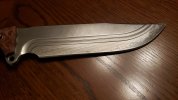
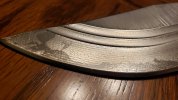
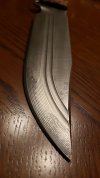
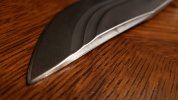
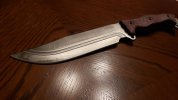
After polish
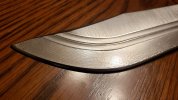
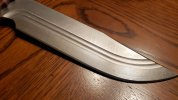
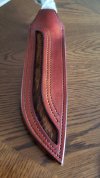
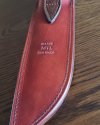
Harness leather with a hair on hide insert. I wet the leather and inserted the knife so it could dry and form around the scales. I wrap all of the knives with a heavy duty seranwrap and warm it to get a good protective barrier before hand so there is protection on the blade. The next morning I pulled the knife out and noticed moisture around the leading edge. I took the seranwrap off and there was the stain. I used some 0000 steel wool but made no difference. I applied some polish and that did end up removing the stain. Im not sure how it happened but maybe the dye used on the liner mixed with water stained the steel? I did notice it did not stain the sharpened edge, just the sides.





After polish





